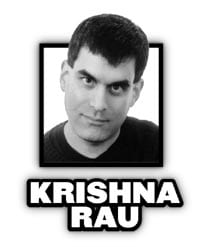Many members of minority groups in Canada don’t trust the media. They think newspapers and television provide only superficial and sensationalistic coverage, and frequently portray them solely in terms of negative stereotypes.
Muslims think the media portrays them all as terrorists. The Chinese think they’re all shown as illegal migrants. Jamaicans worry that they’re only shown as criminals. And gay men and lesbians say the media all too frequently only shows them on Pride Day or as HIV-positive, sex-obsessed child molesters.
Journalists, on the other hand, can feel that they’re being unfairly blamed for merely reporting on the news and that communities are sometimes too sensitive about bad news. Journalists also frequently feel at a loss as to where to begin to look for contacts within unfamiliar communities, and feel uneasy about covering cultures that are new to them.
The result has been that a rift has developed between the media and many diverse ethnic and religious groups, particularly in Toronto. And given that a majority of the population in the Greater Toronto Area is already non-white, it’s an increasing concern to everybody.
It’s these issues that the Ryerson University School Of Journalism is trying to address. At the beginning of this year, I was hired to set up and direct a website to look at media coverage of minority groups in Canada.
The website grew out of a third year class on covering diversity taught by John Miller, a former senior editor at the Toronto Star and ex-chair of the journalism department. After leaving the Star, Miller conducted a number of studies on the lack of diversity in newsrooms and on the page. He obtained a grant from Heritage Canada and spent a year developing the course, which began in 1997, as one way of combatting the failure of mainstream media to fairly and accurately reflect the different communities they’re supposed to cover. These students will eventually take their place within the ranks of professional journalists.
Miller sees a website as a way of looking at media coverage on a ongoing and easily accessible basis, and was eventually able to persuade the university to finance it, at least until November of this year.
But now that the site, named Diversity Watch, is nearing readiness, we’ve discovered that our more important function might be that of providing information.
Looking at media coverage remains one of our primary functions. We will, for example, be examining coverage of Pride next month. Will the coverage be fair and accurate, or will it be sensationalized and distorted?
When communities feel that they’ve been unfairly covered, they often think there’s nothing they can do about it. They see little point in writing letters and they feel that editors and reporters will just brush their concerns aside.
Even when they want to praise a story, they’re not sure how to go about it.
At Diversity Watch, we think that we might be in a better position to examine all aspects of the situation. Coming from a journalism school and with my own background reporting for daily newspapers, reporters might feel comfortable talking to me about why they made the decisions they did about a story. And I’ve spent much of the past five months talking to various community groups across Canada about issues of media coverage.
When a relevant story is brought to our attention, we’ll talk to the affected community, talk to the journalists involved and write our own story deciding if it was a legitimate story, an unfair representation or, perhaps, a story that should be praised as contributing to the reader’s understanding of a culture.
The Toronto Star is currently running a series of columns by Haroon Siddiqui looking at the ways in which media have failed to properly cover Canada’s diverse communities. That’s the sort of story we want to draw attention to.
Conversely, media coverage of Chinese migrants in British Columbia has been abysmal. They’re usually shown only behind bars, and presented as an undifferentiated mass, rather than as individuals. There’s been hardly any coverage of why so many people would undertake the expensive and dangerous journey to leave China, very little on their future in Canada, very little on harsh new changes proposed to Canadian immigration law, and very little on the history and culture of Chinese in Canada. Any yet, often, these are the only news stories in which Chinese appear.
We’ll offer original stories from the Diversity Watch staff and ideas from various communities across the country about what’s going on that isn’t getting coverage.
Other sections of the website will hopefully serve to head off some of the more unfair stories. Too often, journalists covering a story involving a particular community will be unaware of the history and context of that community in Canada. A fuller picture of a group’s presence in Canada and its contributions would go a long way to dispelling stereotypes.
So there’s background information on various communities and a glossary that will explain specific cultural, religious or social terms.
How many Chinese are there in Canada? When and why did Somalis begin immigrating to Canada? What’s the difference between First Nations, Innu, Inuit and Metis? What is the Adi Granth? Who speaks Tagalog? Did you know that Muslim immigration to Canada began in the 1800s?
The site will also offer links to numerous resources and contacts within various communities.
Another section of the website will look at the class that this project sprang from. It will include essays from students about their encounters with or their own feelings of racism, homophobia and prejudice, and how these experiences might affect their own work as journalists.
That’s our hope for Diversity Watch: that the site will help people – journalists, students, members of specific communities or just those interested in Canada’s diverse population – to learn more.
Check it out at www.diversitywatch.ryerson.ca. The site will be officially launched on Tue, May 22.


 Why you can trust Xtra
Why you can trust Xtra


